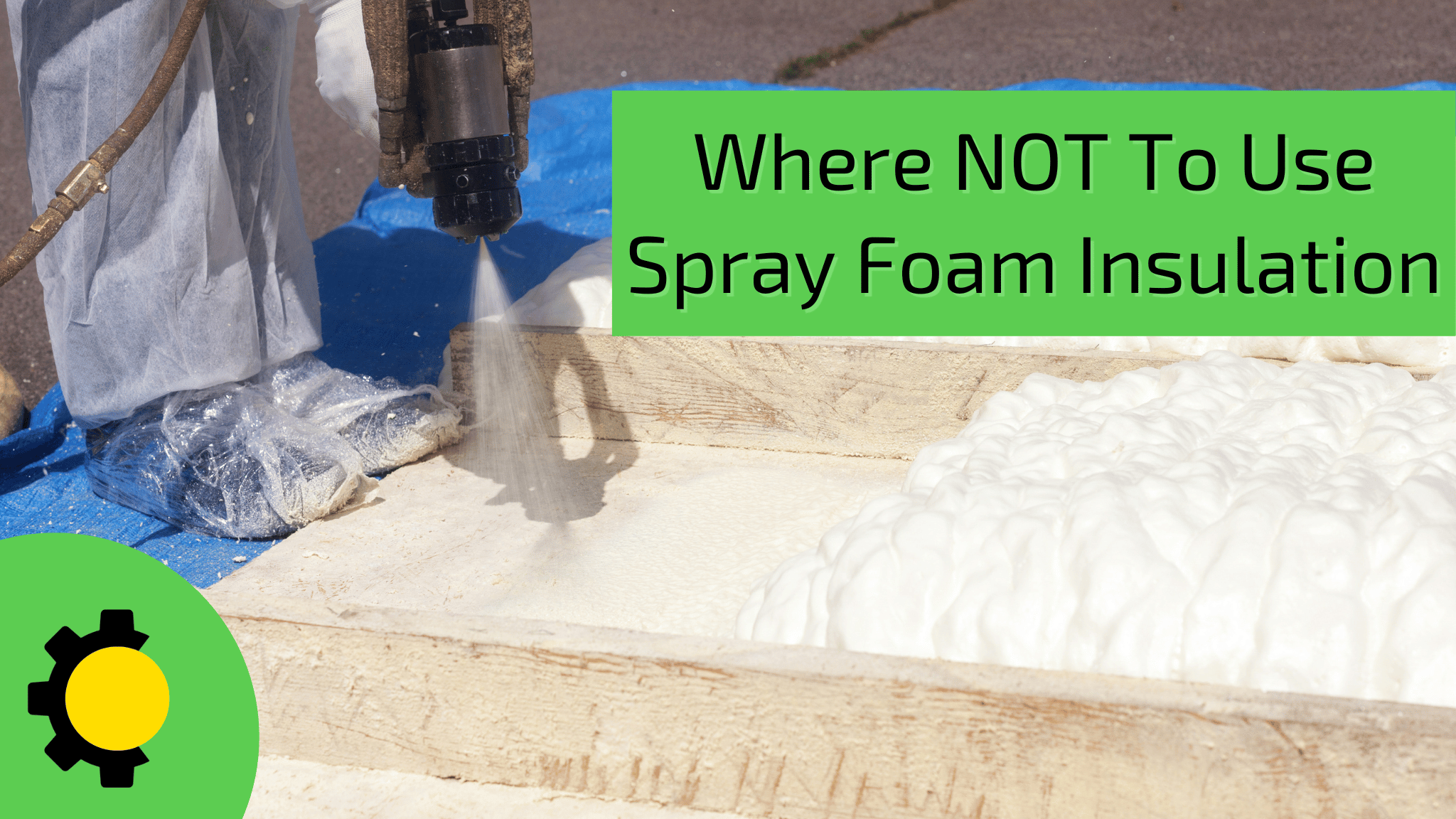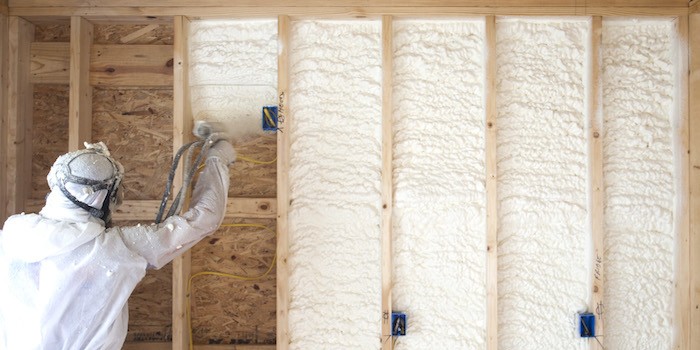Tips for Preserving Your Spray Foam Insulation for Long-Term Performance
Tips for Preserving Your Spray Foam Insulation for Long-Term Performance
Blog Article
Spray Foam: The Ultimate Option for Air Sealing and Insulation
Spray foam insulation has actually become a leading service for reliable air securing and thermal insulation, supplying an unique mix of residential properties that set it in addition to conventional techniques. Its capacity to expand and fill gaps makes it especially efficient in protecting against air leakage, which can significantly influence energy efficiency. However, comprehending the full extent of its benefits, installation processes, and comparisons with various other insulation kinds is crucial for making educated decisions. As we check out these elements, the effects for both brand-new buildings and retrofits end up being progressively significant. What factors should influence your choice?
What Is Spray Foam?
Spray foam is a flexible insulation product that integrates the principles of air sealing and thermal resistance to boost power performance in buildings. Composed largely of polyurethane or various other similar substances, spray foam is used as a liquid that expands upon call with surface areas, producing a strong, constant layer of insulation. This one-of-a-kind residential property permits it to load gaps, cracks, and spaces that traditional insulation products might overlook, supplying a superior air seal.
There are two main kinds of spray foam: open-cell and closed-cell. Open-cell spray foam is lighter and much more versatile, offering exceptional audio absorption and a reduced R-value per inch - Spray Foam. In contrast, closed-cell spray foam is denser, giving a higher R-value, moisture resistance, and included architectural stability to developing components
The application process usually involves specific tools, making certain a seamless application that follows different substrates, including concrete, metal, and timber. This flexibility makes spray foam ideal for both brand-new buildings and retrofitting existing frameworks. Its capacity to develop a closed obstacle dramatically contributes to reducing energy intake and boosting indoor air top quality, consequently making it a recommended choice amongst building contractors and homeowners alike.
Advantages of Spray Foam Insulation
One of one of the most significant benefits of spray foam insulation is its remarkable capacity to produce a continual air obstacle, which effectively minimizes power loss. Unlike standard insulation materials, spray foam increases to fill voids and splits, ensuring that air leak is significantly reduced. This characteristic not only improves energy efficiency but also leads to reduce energy bills with time.
Furthermore, spray foam insulation provides remarkable thermal resistance, adding to a much more steady indoor environment. Its high R-value per inch permits for reliable insulation in restricted rooms, making it ideal for attics, wall surfaces, and crawl spaces. The moisture-resistant properties of spray foam aid stop mold and mildew and mildew development, advertising healthier living problems.
One more crucial advantage of spray foam insulation is its sound-dampening top qualities (Spray Foam). It successfully minimizes noise transmission between spaces, producing a quieter and a lot more comfortable home environment. The toughness of spray foam additionally sticks out, as it does not sag or settle over time, maintaining its performance throughout its lifespan
How Spray Foam Functions
Comprehending how spray foam insulation functions is important for appreciating its performance in air securing and thermal resistance. Spray foam insulation contains two key elements: isocyanate and polyol material. When these elements are mixed, they undertake a chain reaction that triggers the product to increase swiftly, producing a thick foam that fills up tooth cavities, spaces, and splits.
As the foam broadens, it abides by surfaces, creating an airtight seal that considerably lowers air seepage. This characteristic makes spray foam insulation highly reliable at stopping drafts and moisture penetration, which can cause energy loss and damages over time. Additionally, the closed-cell variation of spray foam provides superior thermal resistance due to its stiff framework, efficiently minimizing warm transfer.
The one-of-a-kind residential properties of spray foam enable it to adapt to irregular surfaces, making certain comprehensive coverage and a seamless barrier. Therefore, spray foam insulation not only improves energy effectiveness but also adds to boosted indoor air high quality by decreasing the build-up of irritants and pollutants. Eventually, understanding the technicians behind spray foam highlights its duty as a premium option for insulation and air sealing in both property and commercial applications.
Installment Refine Summary

Prior to installment, the room must be adequately cleaned up and prepped, making certain that surface areas are totally free from dust, particles, and moisture. Since impurities can jeopardize bond and overall efficiency, this action is essential. Once the location is prepared, the application involves mixing both components of the spray foam, which expands upon get in touch with and loads voids successfully.
Trained experts should carry out the setup, utilizing specialized equipment to ensure uniform insurance coverage and optimum density. Security safety measures, including using protective gear and making sure proper air flow, are important during this procedure. After application, the foam typically treatments quickly, developing a solid obstacle that boosts power performance.
Comparing Spray Foam to Traditional Insulation
When reviewing insulation alternatives, spray foam insulation attracts attention in contrast to traditional materials such as fiberglass and cellulose. One of the primary benefits of spray foam is its superior air securing capacities. Unlike fiberglass and cellulose, which you can try these out can enable air infiltration, spray foam broadens upon application, loading gaps and voids to develop an impermeable seal. This causes enhanced energy performance, as less heated or cooled down try here air gets away the home, bring about reduced energy expenses.
In addition, spray foam provides a greater R-value per inch than standard insulation types, using even more effective thermal resistance in a thinner profile. This characteristic is particularly beneficial in spaces with minimal dental caries depth. Furthermore, spray foam is resistant to dampness and mold growth, which can be a considerable interest in cellulose and fiberglass, especially in damp environments.
However, spray foam insulation generally lugs a greater upfront cost than its conventional counterparts. House owners must evaluate this preliminary investment versus long-lasting energy cost savings and efficiency benefits. Ultimately, while both insulation types serve their purpose, spray foam becomes a much more innovative service for contemporary insulation needs, specifically in terms of air sealing and thermal performance.

Final Thought
In summary, spray foam insulation stands for a highly effective solution for accomplishing ideal air sealing and thermal resistance. Its unique properties, consisting of dampness resistance and audio dampening, Get More Info make it ideal for different applications in both brand-new building and constructions and retrofitting tasks (Spray Foam). Although the preliminary prices may be higher contrasted to standard insulation materials, the long-lasting benefits, such as substantial energy cost savings and improved interior air top quality, validate the investment and emphasize its value in modern-day building methods.
Spray foam insulation has actually emerged as a leading option for reliable air sealing and thermal insulation, providing an unique combination of homes that set it apart from typical methods.Spray foam is a versatile insulation material that combines the concepts of air securing and thermal resistance to improve energy performance in buildings.When reviewing insulation alternatives, spray foam insulation stands out in comparison to conventional materials such as fiberglass and cellulose. Eventually, while both insulation kinds serve their purpose, spray foam arises as an extra innovative service for modern insulation needs, especially in terms of air sealing and thermal efficiency.
In summary, spray foam insulation represents a highly effective remedy for attaining optimum air sealing and thermal resistance.
Report this page